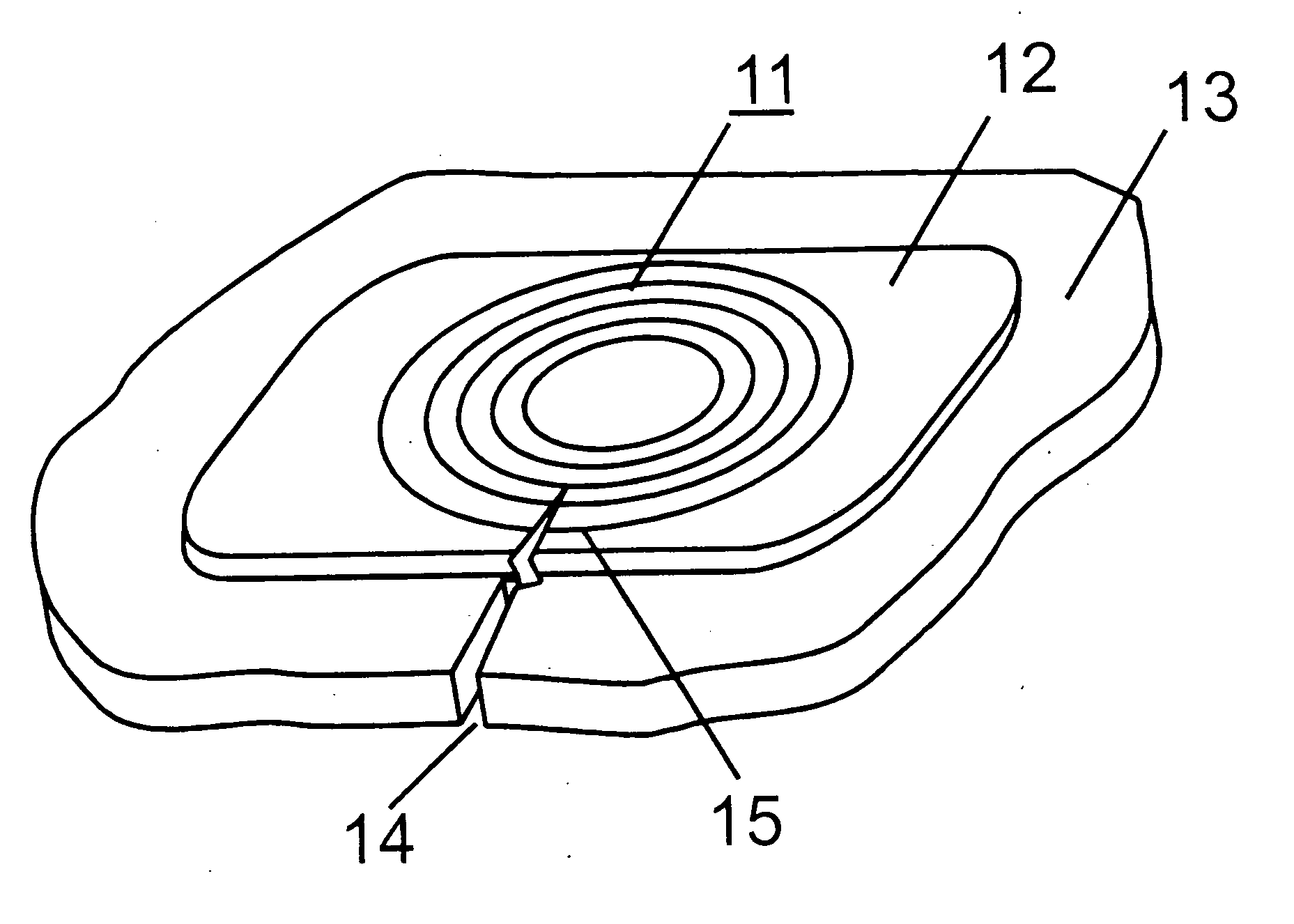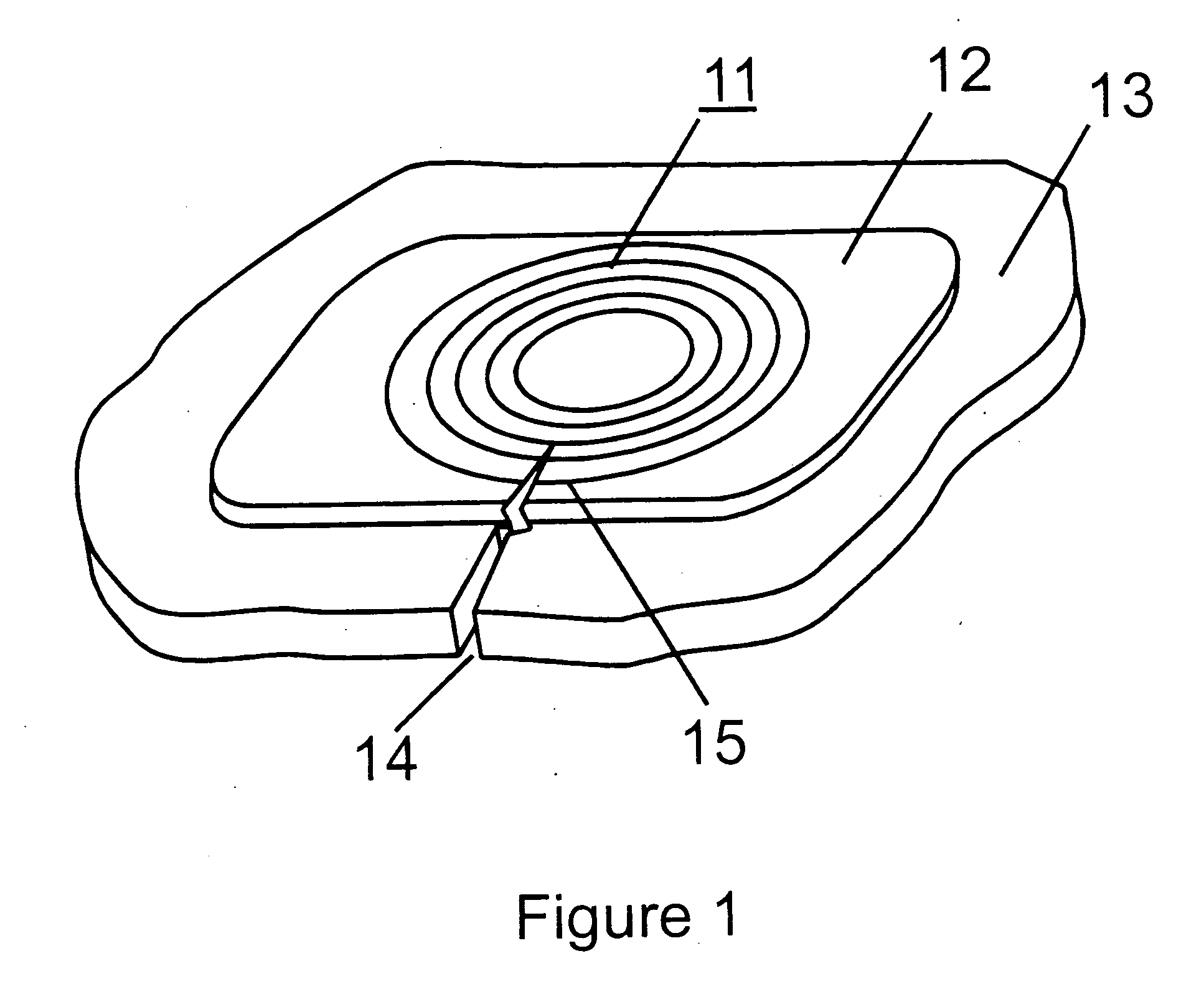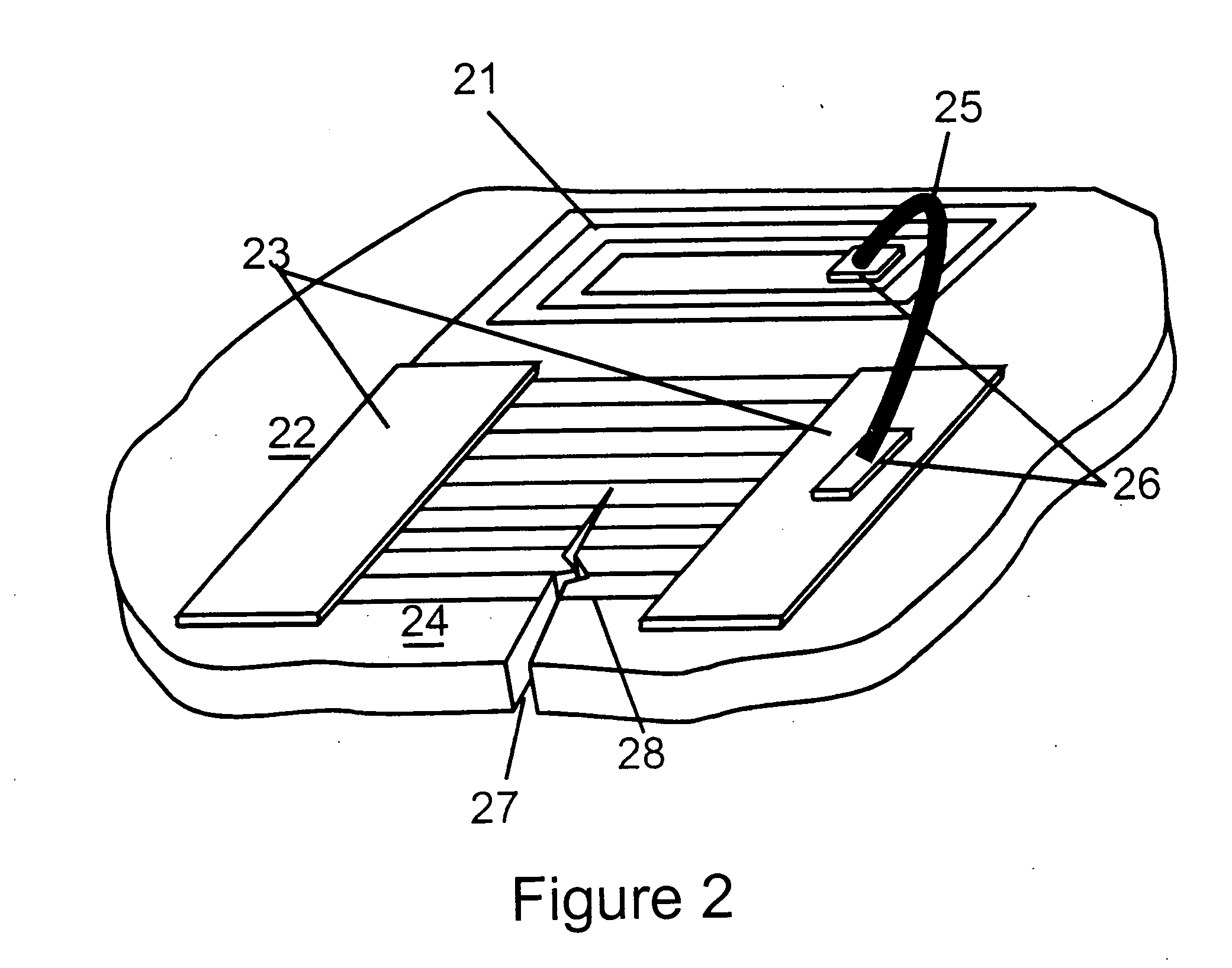Non-contacting crack sensor
a crack sensor and non-contact technology, applied in the direction of instruments, structural/machine measurement, using mechanical means, etc., can solve the problems of difficult correlating results from acoustic detection methods, degrade material integrity, and high cost, and achieve low cost and reliable material integrity
- Summary
- Abstract
- Description
- Claims
- Application Information
AI Technical Summary
Benefits of technology
Problems solved by technology
Method used
Image
Examples
Embodiment Construction
[0017]FIG. 1 shows the preferred embodiment of the crack sensor. The sensor consists of a number of concentric metal rings 11 that are built upon an insulating substrate 12. The rings and substrate are bonded to the structural material 13[,] under test. The rings are designed to break when a crack in the structural material propagates below them. This is accomplished by ensuring that for a critical crack size the stress within the structural material exceeds the critical strain energy release rate of the adhesive / crack sensor system. The strain energy release rate of the sensor system therefore must be lower than that of the structural material. First, to ensure that cracks couple with the sensor, allowing detection, and second, to reduce the probability of a crack nucleation site arising in the sensor from propagating to the composite matrix. If a crack 14 is produced in the structural material, one or more of the metal rings such as 15 will break causing an open circuit in that ri...
PUM
| Property | Measurement | Unit |
|---|---|---|
| frequency | aaaaa | aaaaa |
| resonant frequency | aaaaa | aaaaa |
| phase/frequency | aaaaa | aaaaa |
Abstract
Description
Claims
Application Information
 Login to View More
Login to View More - R&D
- Intellectual Property
- Life Sciences
- Materials
- Tech Scout
- Unparalleled Data Quality
- Higher Quality Content
- 60% Fewer Hallucinations
Browse by: Latest US Patents, China's latest patents, Technical Efficacy Thesaurus, Application Domain, Technology Topic, Popular Technical Reports.
© 2025 PatSnap. All rights reserved.Legal|Privacy policy|Modern Slavery Act Transparency Statement|Sitemap|About US| Contact US: help@patsnap.com



